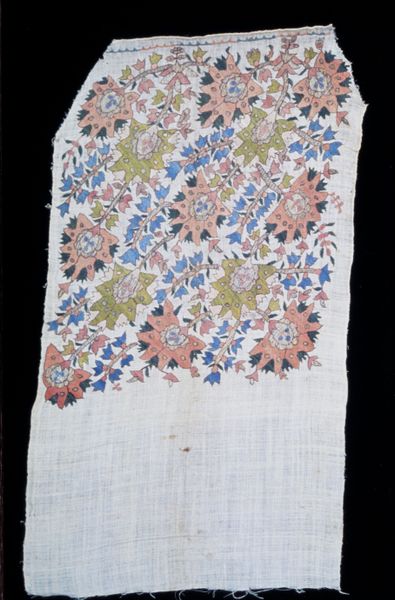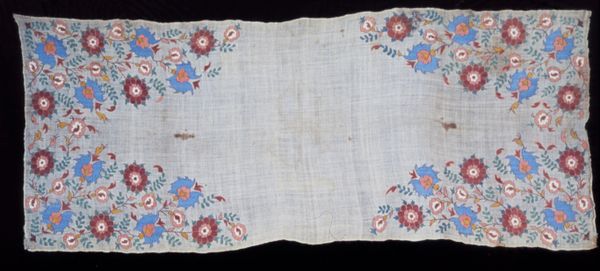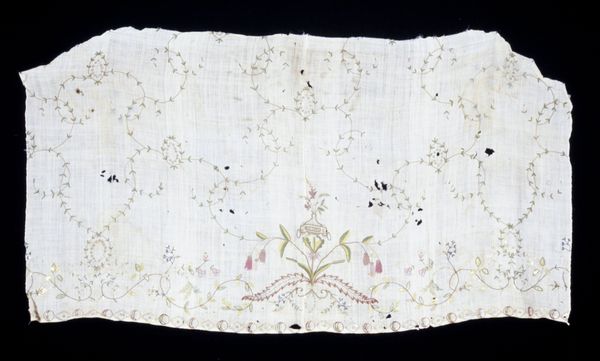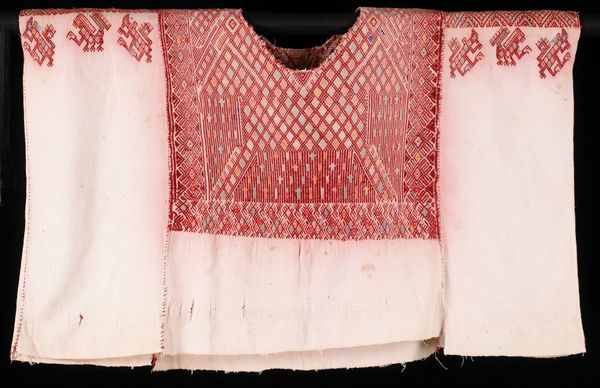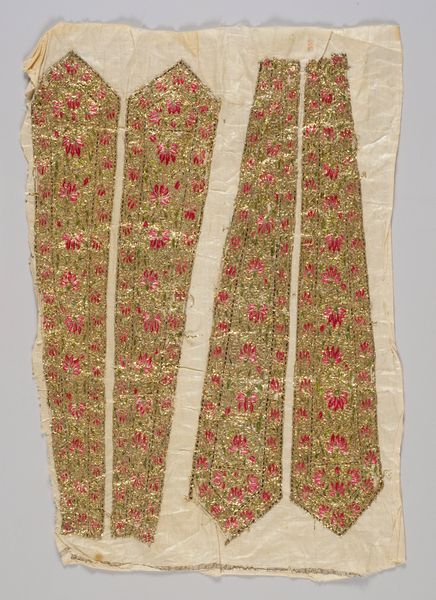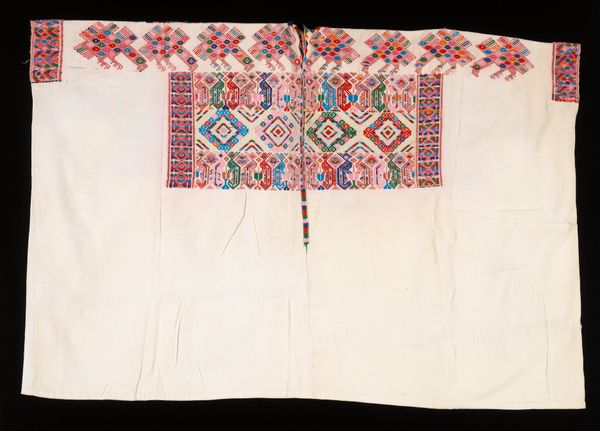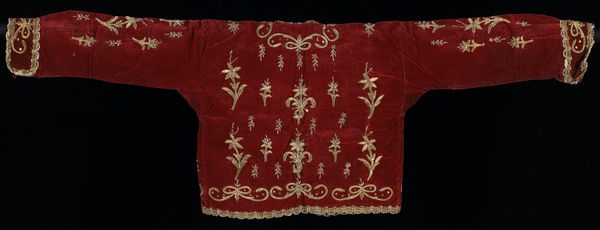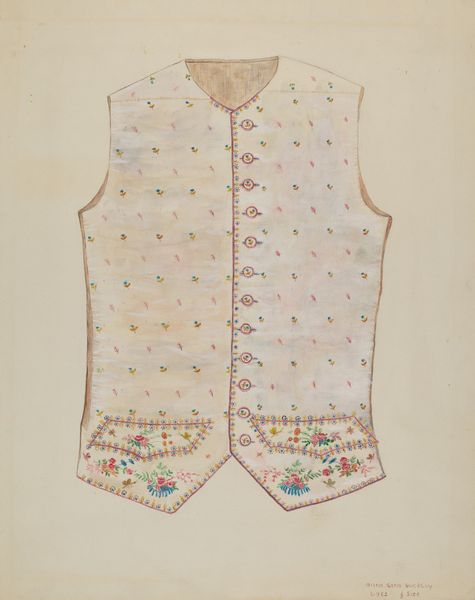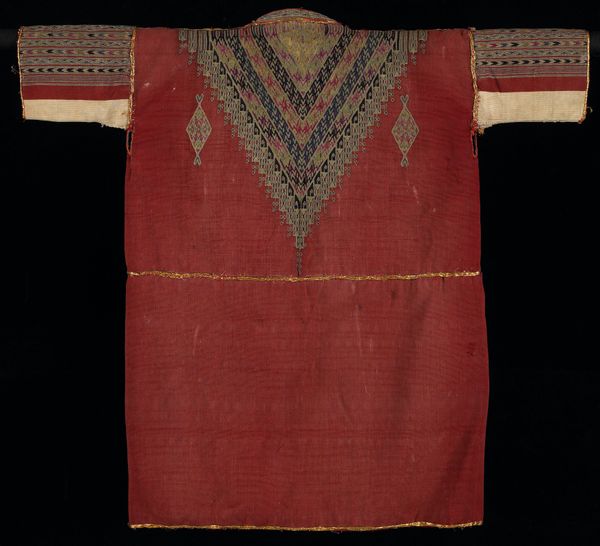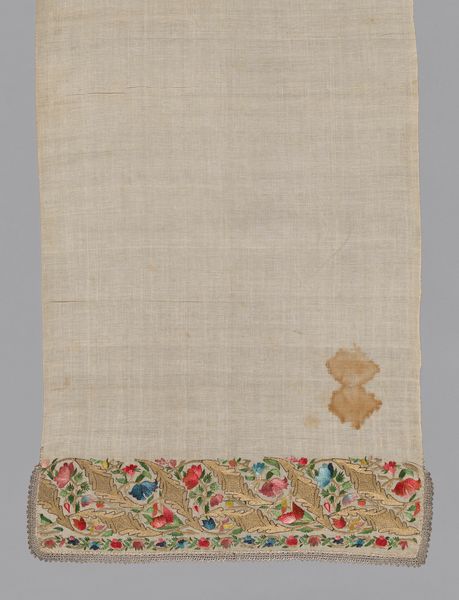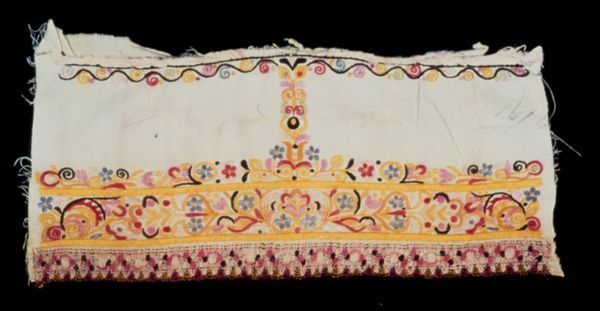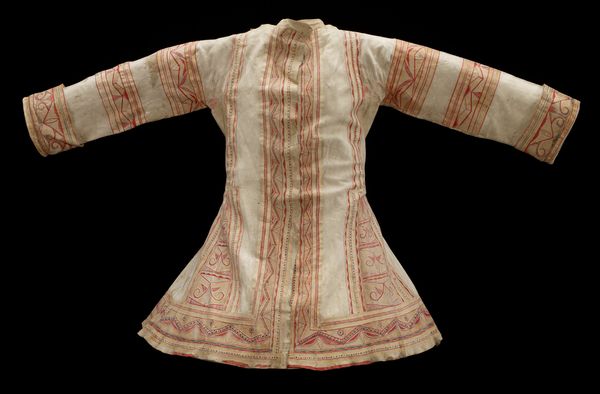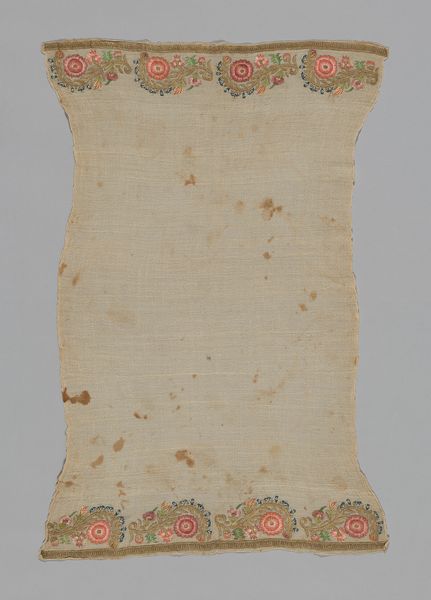
fibre-art, silk, textile
#
fibre-art
#
silk
#
textile
#
decorative-art
Dimensions: 56 x 38 in. (142.24 x 96.5 cm)
Copyright: Public Domain
Editor: Here we have the "Barber's Apron," from around the 19th century, a delicate textile piece made of silk and other fibres. The floral embroidery is so detailed. I find it very ornate, but in a subdued, almost humble way. How do you interpret this work? Curator: I see it as a powerful reflection of labor and identity. Beyond its decorative appeal, consider the socio-economic implications. Who was the barber? What was their social standing? And what does adorning such a functional garment signify? It is about more than aesthetics. This object carries coded information on gendered labour roles, class status, and cultural identity within a specific historical framework. What is your read on this idea? Editor: That makes me think about how something like an apron, meant for protection during work, becomes a canvas for intricate art. Did the act of embellishing a simple apron maybe offer some dignity or pride to the profession? Curator: Precisely. Think about how this artisan took agency through ornamentation, transforming the mundane into the meaningful. The choice of floral motifs, the skill invested in each stitch, are deliberate acts resisting the erasure often associated with working-class existences. The materiality and craft are also worth discussion here. This approach also raises further questions. What is beauty? How is it defined? Is something beautiful if it speaks about the margins? Editor: I hadn't considered that angle at all. I was so caught up in the prettiness, I didn't think about its implications. Curator: That’s the fascinating thing about art; it gives space to explore cultural issues, prompting critical thinking about history and social change through what seems like a basic textile piece. Editor: I see the apron now with different eyes. There's an untold story of class, labour, and identity woven right in. Thank you!
Comments
minneapolisinstituteofart almost 2 years ago
⋮
The obvious need to protect one's clothing while getting a hair cut is recognized the world over. In many places this procedure is performed outside, often in a public area such as a street or courtyard. In such circumstances clients would like to look their best and this elaborately decorative cover would be a definitive statement of opulence and by inference, elevated social standing.
Join the conversation
Join millions of artists and users on Artera today and experience the ultimate creative platform.
